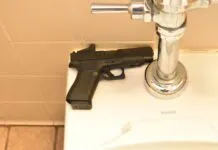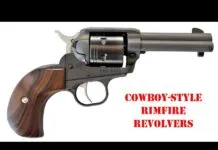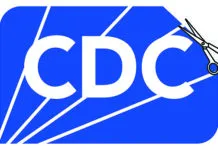Cookie Vs. Back Pocket
Re Is Pocket Carry Safe? Getting A Hold on Pocket Holsters, March 2004.
Thats Grahams Back Pocket at $40, not the Cookie at $35. I have one for My Walther TPH and its outstanding.
-E. Tobiassen
Haverhill, MA
———-
Grahams Cookies
Re Is Pocket Carry Safe? Getting A Hold on Pocket Holsters, March 2004:
Thanks very much for the article. It is generating lots of interest at this end. The holster you reference is actually called the Back Pocket. The Cookie is a front pocket holster similar to the Rosen holster in the article.
I am a one-man shop, and I tend to work some pretty long hours. I do not have a phone in my shop. Email to grahamholsters@comcast.net is generally the fastest way to get me. Thanks again for the interest in my work. It means a great deal to get such exposure.
-Ron Graham
Grahams Custom Gun Leather
www.grahamholsters.com
———-
Pocket Holsters
Re Is Pocket Carry Safe? Getting A Hold on Pocket Holsters, March 2004:
There are a couple of makers I have run across who make reliable pocket holsters at a reasonable price. Action Direct makes a leather pocket line where the smooth side is on the inside of the holster, facilitating a easy draw, and the rough side faces outward, helping it cling to fabric. DeSantis has a pocket holster called the Nemesis, where the outer material feels like a Pachmayr rubber grip. I just checked the manufacturers websites and both holsters are still made.
-Dave Dace
Belton, TX
———-
A Weighty Issue
Re Pocket Pistols: Kel-Tecs .380 And .32 ACPs Versus NAA, March 2004:
The review of the Kel-Tec P3AT was very helpful and informative. In fact, I purchased one based on your review, and I am very happy with it so far.I am curious about the specs contained in your article, though. The article reports the weight as 14 ounces, but Kel-Tec indicates the weight is 7.2 ounces empty, plus 2.8 ounces for a loaded magazine. Upon weighing my own P3AT, I found Kel-Tecs weight to be accurate. See www.kel-tec.com/p3at_pistol.htm for the P3ATs specs.
-David Parrott@aol.com
I found out some important information related to this test. One is that my mechanical scale needs to be carefully recalibrated on a regular basis. Another is that my new electronic digital platform scale is a much better choice for weighing guns. According to my scales, I supplied the wrong information regarding the Kel-Tec Models P32 and P3AT. The P32 weighed in at 6.7 ounces, and the P3AT weighed 7.4 ounces, much closer to manufacturer specs than reported. -Roger Eckstine
———-
Stevens 411
Re Short Shots, January 2004:
If you decide to do a review of the Stevens 411, here is some background information. I have just received one the first Stevens 411s (which is a decorated Baikal IZH M43) and am not favorably impressed.
I specialize in quality shotguns (see www.herosarms.com), but I try to have a few utilitarian entry-level guns as well.
The Baikal IZH M43, which I recently sold for $360, only cost me about $250 and is identical to the Stevens 411 (which cost me $370, shipping included) except that the Baikals wood is better and its bluing is superior.
Stevens has put on a fluorescent red-front sight with a mid bead; the Baikal has only a front bead. The Stevens has false sideplates with laser engraving, screwed on the sides of the boxlock, and the Stevens has some engraving on the trigger guard and the forend iron.
Both use the same choke tubes (Colonial Arms True-Tubes), have the same single selective trigger, the same automatic safety, the same rough trigger pull. The weight is identical. The Stevens came with a one-year guarantee from Savage, the Baikal with a one-year guarantee from EAA plus a lifetime repair or replacement guarantee from Davidsons.
The difference in the wood was dramatic, but the bluing on the Stevens was so thin that it was worn off the underside of the barrels at the muzzle, and several other places you can see through it – and this is fresh out of the box.Perhaps if the wholesale price of the Stevens comes way down it will be competitive, but I cant buy a gun for $370, photograph it, advertise it, correspond about it and sell it for $395 or even $425, which is the currently recommended MSRP.
I enclose photos of the stocks of both guns.
-Hubbard Taylor Buckner
Heros Arms. South Hero, VT
www.herosarms.com
———-
Weatherby: Not A Major?
Re Two .338 Winchester Magnums Vs. Remingtons .338 Ultra Mag, March 2004.
In the article on .338s you state, There are other .338 cartridges, one of the best being the .338-06, but no major factory has yet adopted that cartridge, despite many rumors.
In the September 2001 issue of American Hunter magazine, page 96, Wayne van Zwolle reviews the Weatherby .338-06 Ultra Lightweight Mark V. On page 98 is a box of Weatherby .338-06 A-Square ammo. Weatherby may not be one of the big three (Remington, Ruger, Winchester) but it is still a major player in the firearms industry.
-John P. Ashjian
San Antonio, TX
———-
.32 NAA
Re Pocket Pistols: Kel-Tecs .380 And .32 ACPs Versus NAA, March 2004:
Regarding your review of the Guardian semi-automatic pistol, you mentioned that the pistol showed signs of having dangerously high pressures. If you note in your pictures, while the primers are cratered looking, they are not flattened at all. Also, you did not mention that the shoulder of most fired cases was blown out almost all the way to the mouth. I contacted NAA about these two issues and was told that this situation is not indicative of high pressure and is completely normal. The pistols slide starts rearward before the pressures have fallen off completely, and this causes the shoulder to be blown forward. Since the case head is also not in firm contact with the bolt face at this time, I suspect that is what causes the primer to look cratered, although not flattened. I worked up reloads using Hornady and Speer 60-grain HP bullets with home-rolled (CH-4D) crimp grooves using load data from Hodgdon and Lee dies. All loads, from start to maximum, showed the same primer cratering that you saw in your Cor-Bon factory loaded .32 NAA rounds. Did you by any chance notice that the bullets might have been loose in the Cor-Bon ammo? I bought 120 factory Cor-Bon loads and 23 percent of them had bullets that could be turned with your fingers. The crimp groove prevented them from being pushed back into the case or pulled out, but the chronograph did reveal that the cartridges with loose bullets were quite a bit slower than cartridges with tight bullets (1197 fps for loose bullets versus 1243 fps for tight bullets, handloads clocked 1245 fps). I contacted Cor-Bon about this but received no reply. I did notice while reloading, if the bullet was seated and crimped in one step, the bullets were loose almost all of the time. However, if the bullets were seated in one step, then crimped in another, loose bullets were no longer seen.
So far I have shot 320 rounds through this pistol, 300 handloads, 20 Cor-Bon. The only malfunctions have been the occasional last-round stovepipe. However, since this pistol has no ejector, this is not really a malfunction. So long as there is a round in the magazine being fed up under the fired case, the empty is ejected over the shooters head 2 to 6 feet behind him. Only when there is no round to eject the empty (last round), does the occasional stovepipe occur. When affecting a reload, a charged magazine is inserted, the slide is pulled back, and the stovepiped case clears and a new round is chambered.
In the future, before stating that a load or pistol is showing dangerously high pressure signs, it might be prudent to check with the maker of both the pistol and the ammunition, because things might not be as they seem.
-F. D. Fleming
Jeffersonville, IN
———-
Cor-Bon .32 NAA Pressures
Re Pocket Pistols: Kel-Tecs .380 And .32 ACPs Versus NAA, March 2004:
It was nice to see the article on the NAA pistol that utilizes our 32 NAA ammunition. I usually enjoy reading what you folks have to say about things in the industry because you arent swayed by any manufacturers with their advertising dollars. However, I feel in your article pertaining to the 32 NAA, I feel you have erred. The pressure limits on the 32 NAA were established by SAAMI, an organization of which we are members as well as NAA. Your author stated that he saw bulges around the firing pin mark on the fired primer, and he stated that the load was too hot and that these marks indicate high pressure. We have expensive and very precise equipment here at our facility that we test every lot of ammunition with, as its being loaded. I assure you that the lot of ammunition you used was within SAAMIs guidelines for pressure. Gauging pressure from looking at the fired primer can be very misleading, and unless you had the ammunition tested by a SAAMI-approved facility, you should not state that the ammunition is over pressure. Weve tested dozens of these pistols with the 32 NAA 60-grain JHP ammunition, and the primers all look the same! We pride ourselves on manufacturing cutting-edge ammunition. Stating that our ammunition is unsafe without testing it by a SAAMI-approved lab is very disturbing to us. We suggest you let your readers know that our ammunition in any caliber is safe to use and its checked in our Quality Control dept several times throughout the manufacturing process.
-Mike Shovel
Sales Manager
Cor-Bon/Glaser
The spent case of Cor-Bons 71-grain FMJ round displayed a primer in normal condition. Our concern stemmed from the fact that holding the small 32 NAA Guardian pistol forces the shooter to place fingers directly below the magazine. A case blowout would certainly injure the shooter. We merely recommended using ammunition that appeared to provide a greater margin of safety to the shooter. -Roger Eckstine
———-
SIG P220ST and IDPA
Re Non-1911 .45 ACP Single-Stack Pistols: Sigarms Versus S&W, March 2004:
In reference to your review of the Sigarms P220ST, if the unloaded weight of 44 ounces that you quoted is correct, that would make this weapon illegal for IDPA competition in the CDP, as well as ESP, division. As per the IDPA rulebook; CUSTOM DEFENSIVE PISTOL DIVISION Handguns permitted for the CUSTOM DEFENSIVE PISTOL division must be .45 ACP caliber and meet the following criteria: Pistol including empty magazine must fit in a box measuring 8 3/4 x 6″ x 1 5/8″ and have a maximum unloaded weight of 41 ounces. To reduce cost and provide a level playing field for all pistols permitted, the maximum number of rounds that may be loaded in a magazine is eight (8).
Also, contrary to your statement that the CDP division was meant to be shot by expensive custom 1911s, so there is quite a bit of modification allowed. The exact opposite is true. It is meant to be shot with an out-of-the-box carry gun, and there is a specific list of about 13 modifications that are allowed. For more info, the actual rulebook can be found at www.idpa.com/menu.htm.
Thanks for an informative publication. I always look forward to the reviews.
-Fayetteville, NC
This gun has already been accepted in IDPA. Our actual weight may not have corresponded with the manufacturers specs, but its published weight in the owners manual makes it legal. Also, I visited the rulebook, and you cannot add weight but you can reduce the weight of the pistol. For example, Ross Carter makes this modification by flat-topping the slide. This reduces reciprocating weight for greater slide speed and lightens the gun. -Roger Eckstine
———-
Wrong Call On The Beef
Re Practical Big-Bullet Revolvers: Steel and Titanium .44 Magnums, January 2004:
The table on page 7 (Accuracy/Chronograph Data) states, The Redhawks frame is beefier (bottom). Actually, the picture shows that the Redhawk is on top. We dont want to confuse the Ruger with the Smith & Wesson.
-Pat Oliver
@bellsouth.net





























